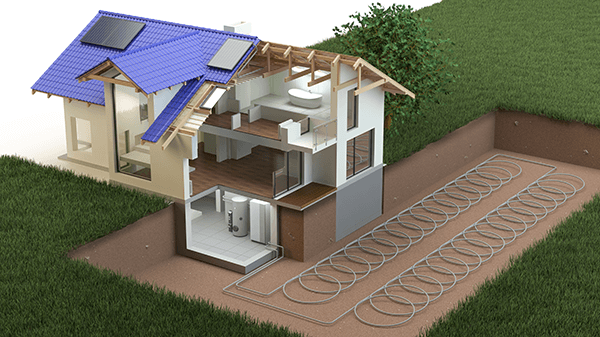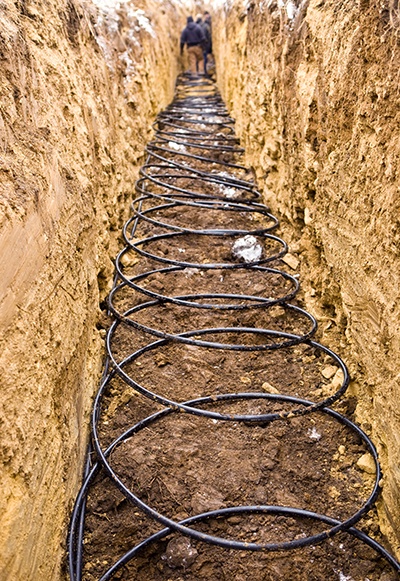How To Cut Your Greensboro, NC. Heating & Cooling Costs by 50%
Heat pumps are systems that function as both your AC in the summer and heater in the winter. They do this by transferring heat either into or out of your space with the help of condenser and evaporator coils. These coils manipulate the heat in the air through refrigerant in a closed-circuit piping system. Basically, it pushes warm, humid air out during the summer, and pushes warm air back in during the winter. The efficient design of a basic heat pump can save users up to 50% on their electric bills when compared with an air conditioner and furnace system. Geothermal heat pumps take heat pump efficiency to the next level, saving owners up to 70% on their energy bills.

The Way it Works
A geothermal heat pump utilizes the stationary temperature of deep soil for its heat transfer process. Geothermal heat pumps have a set of pipes installed at approximately 20 feet below ground, with either air or water flowing through the pipes. The geothermal heat pump then uses the ambient temperature of the soil to improve its efficiency. Here in North Carolina, the soil at around 20 feet deep stays a consistent temperature of 50 to 60 degrees Fahrenheit.
This can be used to improve the heating and cooling abilities of the heat pump. For example, on a 35 degree winter day, it is quicker to warm up the indoor air by pushing it through the 50-60 degree soil first. On the other hand, during a 98 degree summer day, the air will require less effort to cool if it is passed through that same 50-60 degree soil first.
By creating a more efficient heating and cooling cycle, your geothermal heat pump uses little to no electricity while heating and cooling your home or business, decreasing your utility bills by as much as 70%.



